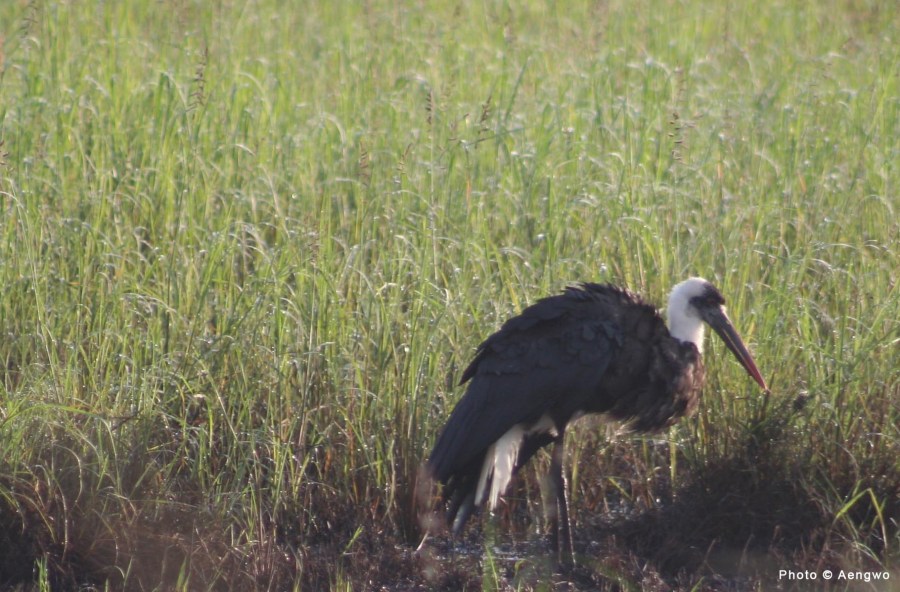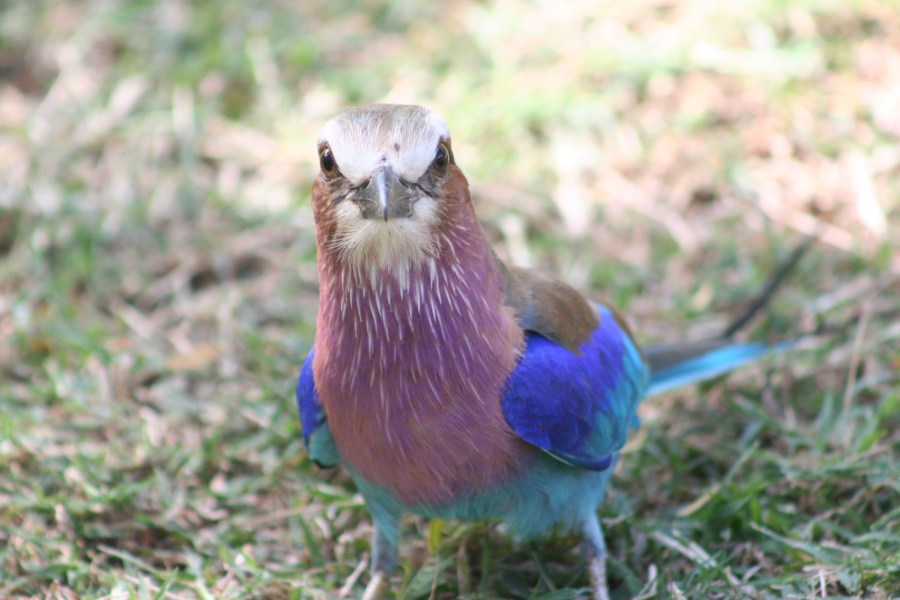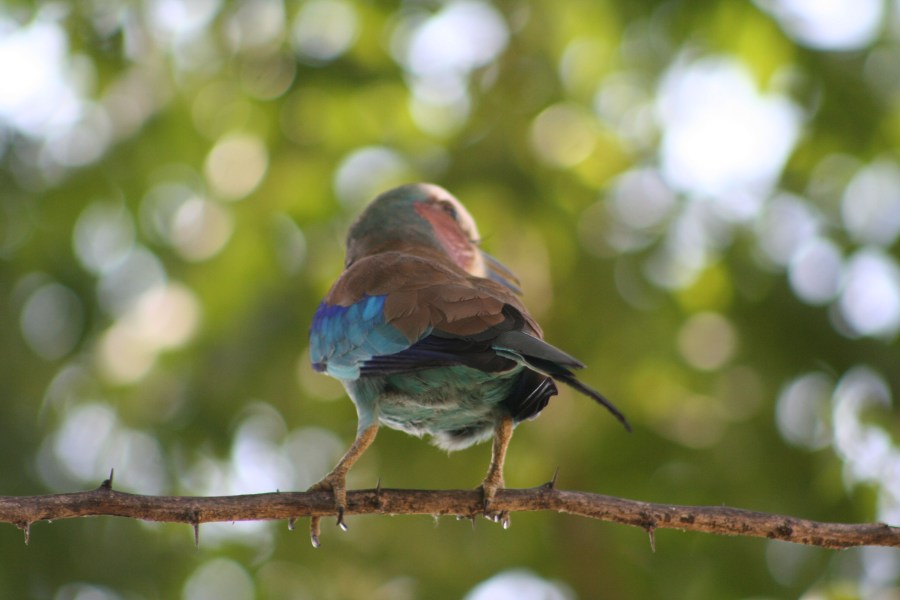Hello fellow birders!
I am off on a birding adventure for the next few weeks with some guests! I am armed with binoculars, a scope, a Canon Rebel XT, and a panasonic mp3 recorder, with which I hope to capture some special birding moments to share with you.
In the meantime, enjoy the Bird of the Week; this unique and beautiful stork.
One of the tallest species of storks is the Saddle-billed Stork, Ephippiorhynchus senegalensis, which stands up to 58 in. high. It has a large crimson bill with a black band and a triangular yellow frontal shield (or saddle), and has black legs with reddish joints. The overall coloring is black and white–the head, neck, tail and wing-coverts black, the remaining plumage and the flight feathers white. It breeds in sub-Saharan Africa, generally by rivers. The large nest is built of sticks in the tops of tall trees. It lays one egg. It feeds on grasshoppers, fish, frogs and lizards.

They can either be found in solitary or pairs, they prefer moist habitat of lake shores, swamps and rivers. In Kenya they are widespread and be spotted in areas like Maasai Mara game reserve, Lake Baringo, Nakuru, Naivasha and Lake Victoria, Meru National Park and the coastal strip.







































